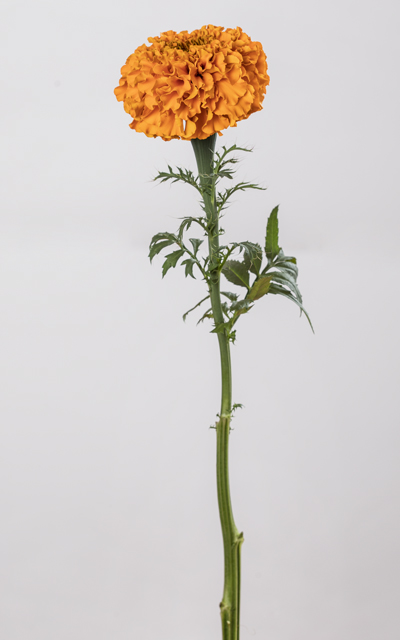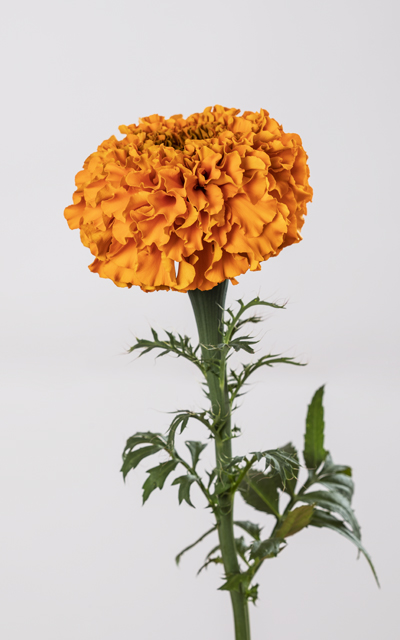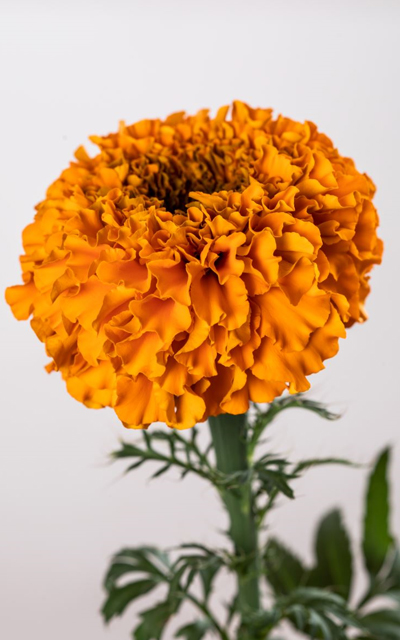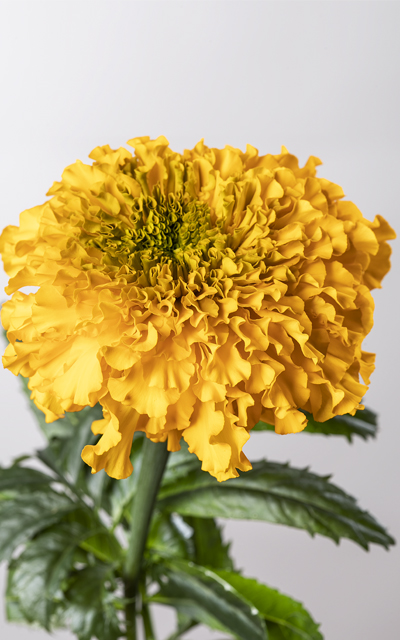Coco
•Perfect for summer and fall
•Excellent focal flower due to its flower size and solid strong orange and yellow color
•Presents a very round flower with a very inconspicuous green center
•Very versatile flower provides a summer cottage look and offers bright, solid colors
Suite (3)
Gold, Orange and Yellow.
Culture Tips
CROP TIME
From planting to harvest: 11 weeks (Orange) and 12 weeks (Gold and Yellow)
Harvest ends on week 13 (orange) and week 14 (gold y yellow).
PLANTING DENSITY
80 plants/ m2 or 7-8 plants/ft2
PRE-PLANTING
Soil: Well drained, loose soil with no clusters, at least 25 cm (10 in.) deep.
pH: 6.2 to 6.5 (plug); >6.5 (plant in production)
Netting: 2 levels
CE: 0.76 -1.25 dS/cm (1:2)
DISBUD
Consists of the elimination of all auxiliary buds. This work is essential to achieve the desirable flowering type. Disbudding is done in week 4 and a second and third disbuddding are done during week 7 and 9.
IRRIGATION
Maintain soil moisture at field capacity. Apply from 4.0 to 6.5 liters / m2 / week according to the organoleptic monitoring. If the irrigation is deficient, it can cause a decrease in the quality of the flower.
FERTILIZATION
A high nitrogenous fertilization can cause an excessive growth of the plants. After transplanting fertilize the first six weeks with a well balanced formula based on Calcium Nitrate. Then switch to a high potassium formulation. Marigold is sensitive to Calcium and Boron deficiency. Apply foliarly for 10 days, starting 10 days after transplanting.
TEMPERATURE
The ideal temperature is between 26 ⁰ and 32⁰C. The minimum night temperature must be 10 ⁰C. It is sensitive to frost.
HARVEST
The harvest should be done when the flower head diameter is 7 cm. Harvest with care. Stems are very fragile since they are hollow.
POST-HARVEST
Use AVB (o.5cm3 /Lt of Water). Mix very well and add AVB Booster (1 cm3/Lt of Water. Keep the flower in this solution for 4 hrs.
Then hydrate for 4 hrs in CHRYSAL PROFESSIONAL 2 (10 cm3/Lt of Water).
PESTS & DISEASES
•Aphids
•Thrips
•Botrytis
•Cutworm
•Alternaria
•Pythium
•Phytophthora
•Pseudomonas







